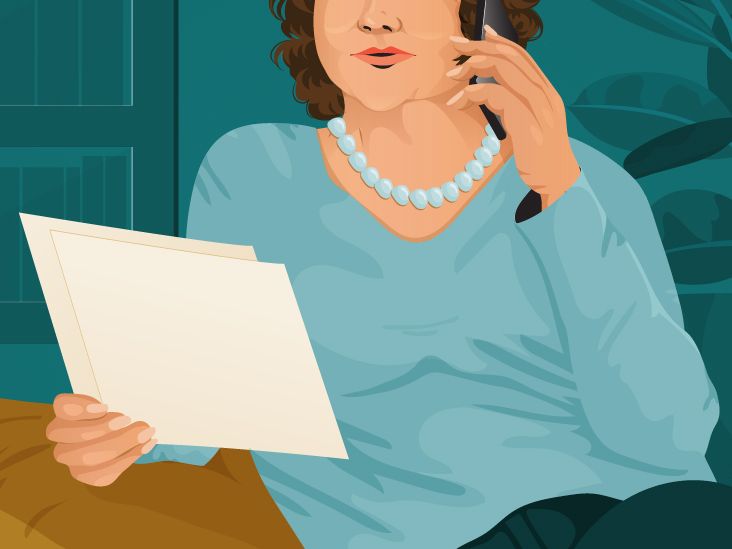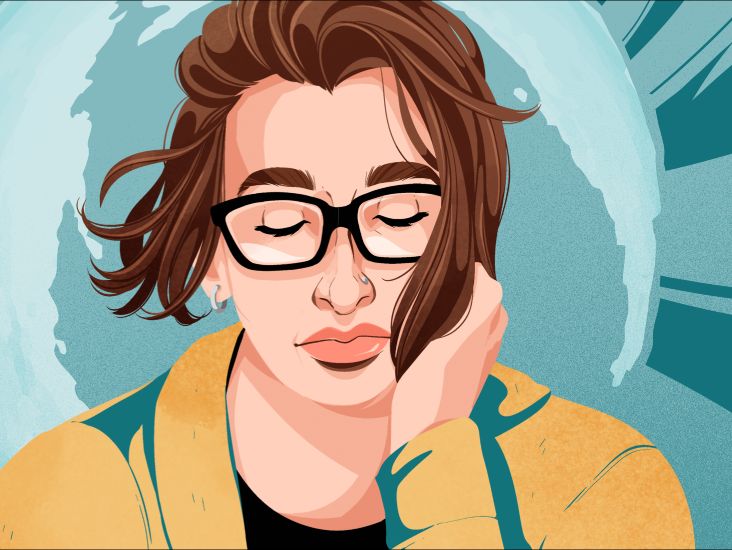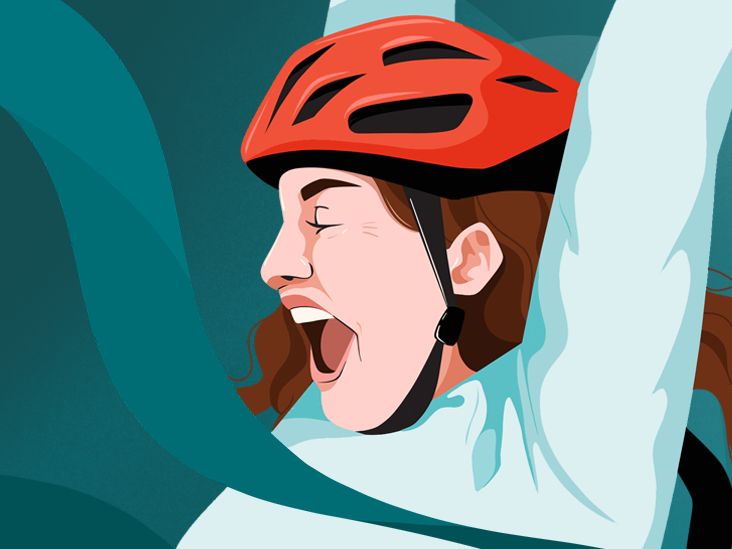
I remember my chronic illness onset viscerally. A tidal wave of brain fog, bone-aching fatigue, flu-like chills, swollen lymph nodes and eyelids, and dizziness. All symptoms that had slowly been creeping in came crashing down at once.
Walking across the house felt like trudging a mile through molasses. Social interactions became a sensory kaleidoscope of words and social cues I could no longer process. I felt like I was moving through the world drugged.
I live with systemic lupus erythematosus (SLE), a chronic autoimmune disease that causes inflammation across all parts and organs of my body; it’s the systemic form of lupus.
In autoimmune diseases, the immune system becomes confused. It mistakenly attacks the body’s own healthy tissues, including organs like the kidneys, heart, and lungs.
Many individuals with lupus will experience organ involvement throughout the course of their disease. This places those of us who have not had identified organ damage in a space of waiting, wondering if or when it will happen to us.
I feel my lupus every day — in my lungs, my nervous and musculoskeletal system, my brain — but in the eyes of medicine, it has not technically done anything. It’s whispered its presence on blood work enough to warrant an SLE diagnosis, but not enough to tell just where it is or what it plans to do.
So, my diagnosis remains “systemic lupus erythematosus, organ and system involvement unspecified.” Until now, maybe.
I can trace my illness diagnosis journey back to college when I caught mono, or the Epstein-Barr virus (EBV). But while most young people with mono sleep for a week or two then brush off “the kissing disease” as a bummer, I found myself growing increasingly tired months after I was supposed to have gotten over the illness.
Over the next year and a half, I began to have bouts of fatigue that would last from hours to days, or even weeks. I attributed these periods to mono “flare-ups” that would naturally pass after a week or two of laying low in bed, like a mild flu or cold. I normalized their abnormality because routine blood work always came back normal. That was, until the day my body “snapped.”
In her book “The Invisible Kingdom,” author Meghan O’Rourke likens her own illness onset to Ernest Hemingway’s account of going broke: “gradually, then suddenly.”
So it was for me.
Still, despite the nonstop and debilitating fatigue, brain fog, and chills, healthcare professionals assured me it was a virus that would pass, suggesting an anti-anxiety medication as treatment.
My life became increasingly smaller as my list of symptoms grew larger.
At 22, I made the difficult decision to move across the country and back in with my family, as living on my own was becoming impossible.
Under my free, state-funded health insurance, I started my tour de diagnosis to any overworked and overwhelmed healthcare professional who would see me.
My primary care doctor diagnosed me with depression. A psychologist called me “highly neurotic.” An infectious disease doctor again claimed an EBV infection. And a rheumatologist took one look at my medical chart and told me I had chronic fatigue syndrome/myalgic encephalomyelitis (CFS/ME), and that I had to “learn to live with it.” They didn’t even run routine blood work to screen for autoimmune diseases.
I grew weary of the carousel of doctors’ appointments and ineffective pharmaceuticals, and threw myself into holistic medicine — antiviral supplements, herbal tinctures, green smoothies. With symptoms triggered by everything from caffeine to sugar, I found myself consuming kale and quinoa for breakfast, lunch, and dinner. Even avoiding most inflammatory foods, much of my day was still spent in bed.
At this point, I was not only exhausted but also angry. Angry at a dismissive medical system, angry at the invisibility of my symptoms, angry at treatment advice that centered on gratitude journals and raw ginger, and angry at the medical professionals who, after months of ineffective treatment, threw their hands up and told me my illness was “all in my head.”
During this time, I had few friends going through similar, dismissive medical experiences (one who would later be diagnosed with another autoimmune disease, ankylosing spondylitis). Scouring the internet for answers to our chronic fatigue, I found online forums brimming with stories identical to ours.
The experience of being told symptoms were all in our heads was far from abnormal. In fact, it was eerily common.
In between naps, I embarked on a research study with my undergraduate college adviser, under whom I studied health communication. We sought to disrupt harmful medical rhetoric surrounding “invisible, contested” illnesses and the “hysterical” female patient.
Our first study focused on messages that women receive from healthcare professionals, family members, friends, and society about their reproductive and sexual health. The findings discussed what messages we are socialized with versus those we wish we had received.
While this study was going on, I was focused on “healing” — finding myself with a bit more energy as I fought the diagnosed EBV infection.
Individuals with SLE are susceptible to chronic and recurrent infections, and EBV
Impassioned by our research, and convinced I was getting “better” because my daily nap had reduced from three hours to one and a half, I applied to a master’s program in interpersonal and health communication to study these messages in the context of young adults with invisible and undiagnosed chronic illness. Seeking catharsis, purpose, and legitimacy, I wanted to prove that it wasn’t “all in our heads.”
But as I started my first semester that fall, the harsh reality of my “getting better” blindsided me as a tidal wave of symptoms crashed in once again.
I would teach in the mornings, nap through the afternoon until my alarm startled me awake, then drag my aching body to evening seminar, feeling more like a zombie with each passing day.
Having been to nine doctors at that point, I didn’t think a 10th would make any difference. So I pushed through the symptoms until I couldn’t anymore.
Living with an invisible chronic illness and having repeated experiences of being told “it’s all in your head” makes you start to lose belief in yourself and your sense of self.
Not wanting to get back on the medical carousel — an exhausting and, at times, dehumanizing process — patients stop seeking medical care, afraid that a new doctor will reopen the scab of not being believed, and that they’ll be left to heal a now-deeper scar, all over again.
Even so, in desperation, I went to my university’s health center and told them my diagnosis of chronic fatigue and EBV. I wanted to know if they would look at my symptoms with “fresh eyes,” not expecting them to find anything new. But to my surprise, an angel of a nurse practitioner (NP) validated my symptoms and said that she would do everything she could to figure out what was going on.
Two days later, this NP called with news of a positive ANA test. Knowing this can be indicative of autoimmunity, she said, “We don’t touch this, we are referring you to a rheumatologist.”
The health center’s validation and new test result confirmed what I had known all along: these symptoms were not “all in my head.” So I stepped back on the medical carousel.
The right tests
ANA stands for “antinuclear antibody.” An ANA blood test detects whether there are autoantibodies in your blood, which can happen during infections and in certain autoimmune diseases. There are several types of ANA blood panels that vary depending on which laboratory you use and what your doctor is screening for.
I tested positive for a test called “ANA with reflex” but negative for the general ANA panel. If I had known to ask for more thorough tests, it might not have taken me five years to get a lupus diagnosis.
After a two-month wait for a rheumatology appointment, I was diagnosed with “undifferentiated connective tissue disease.” My rheumatologist prescribed me the anti-malarial medication hydroxychloroquine, which is often used to treat lupus.
Though SLE was suspected, I did not have enough qualifying blood work at that point to meet the American College of Rheumatology diagnostic criteria.
Over the next year, I diligently attended each rheumatological appointment, noting every new symptom — photosensitivity, increasing joint pain, rashes — and every subsiding one.
While taking medication, my energy was returning, my brain fog was clearing, and the physical symptoms I had lived with for years became tolerable. This seemed to outweigh the side effects of the drug, which for me manifested as a worsening of certain mental health symptoms, later diagnosed as obsessive-compulsive disorder. Another illness journey in itself.
In my graduate program, I embarked on a thesis about the lessons young adults with autoimmune disease learn and receive throughout their diagnostic journeys, interviewing people my age who had also experienced long, arduous, and invisible illness experiences.
At age 26, on the final day of data collection for my thesis, my rheumatologist confidently diagnosed me with SLE after I tested positive for anti-double stranded DNA, a blood test highly specific to lupus.
Diagnosed with two disabling conditions within months of each other, I was forced to reckon with uncertainty, a lack of control, and my own mortality. I don’t know which was most difficult to accept.
It felt like a major life chapter closing. Life with illness, not life as illness, was beginning.
During interviews for my master’s thesis, a young woman with SLE shared the following insight with me:
“In the beginning, it was all consuming. From the time that my diagnosis came and even for some time after that, it infiltrated every aspect of my life. My life was Lupus. [It] impacted everything I did… [but] after a while, [it] was too much… over time, my Lupus evolved from less of an identity to more of just a part of my life.”
The key to learning to live with illness is learning to accept illness — an incredibly difficult thing to do.
In the words of another participant whose ankylosing spondylitis has left her nearly immobile, “When you are chronically ill… you go through a grief process almost every day. Because almost every day can be different.”
The ability to accept illness is a privilege afforded to those who have access to healthcare, respond well to treatment, and experience a reduction of symptoms. These patients have a safety net that makes it possible for them to live with illness, knowing that if something goes wrong, they will be taken care of, medically and financially.
Sadly, this isn’t true for many people living with chronic illnesses. Social inequality creates a reality in which some individuals’ illnesses are invisible even to them, not only due to a lack of healthcare access, but a lack of health literacy.
If people are not taught how their bodies work, how are they expected to identify when something is wrong?
There is an
The Lupus Foundation of America reports that lupus affects Black and Hispanic women at nearly three times the rate of non-Hispanic white women. These women often have a more severe form of the disease and two to three times the mortality rate of white women. Yet, women of color remain underrepresented in clinical trials for lupus.
Learn more about systemic racism in healthcare.
For every individual who has been diagnosed, there are many more “pushing through” symptoms due to a lack of health insurance or access to care.
Improving the timeline of diagnosis and treatment of lupus requires sweeping changes to our medical system. Access to affordable, competent healthcare is a human right, and people deserve to have their concerns and treatment goals validated.
Each person knows better than anyone else what they need for their health, physically and emotionally — so healthcare professionals and loved ones should ask them and listen.
“The key to learning to live with illness is learning to accept illness — an incredibly difficult thing to do.”
At 27, I’m told by my rheumatologist that a new blood test returned as a low positive, indicating potential heart, lung, and musculoskeletal lupus involvement. This development is accompanied by new rashes on my face.
“It’s a low positive, so not positive positive,” my rheumatologist says, waving jazz hands. “But it’s not negative.”
This low positive leads to a slew of outpatient hospital tests: X-rays, an echocardiogram, a pulmonary function test, and vials of blood work. My partner holds me in the kitchen as I face the possibility of this new disease progression.
“We don’t know anything yet,” he says.
So we wait.
Weeks later, the results of the extensive tests come back “normal” and the clock resets.
“We’ll check again in a year,” my rheumatologist says, and I return to my life.
One of the most difficult things to accept about chronic illness is that even though treatment may improve or manage symptoms, it’s never over.
My lupus case remains mild, and my doctors and I work to keep it that way. Though I have come far since the onset of my symptoms in college, there is still so much I do not know about the road ahead.
So I do my best to live in uncertainty and take each day at a time.
Jacqueline N. Gunning is a health communication researcher and writer living in Lincoln, Nebraska. Her research interests lie at the nexus of chronic illness, disability, and sexual and reproductive health, with an interest in identifying how communication can support individuals navigating disruptive health events. She holds two degrees in communication studies: a BA from Emerson College and an MA from the University of Nebraska – Lincoln, completing a thesis that studied narratives of autoimmune disease in emerging adulthood. She works with the Intimate Communication Lab studying health messaging, decision making, and medical agency, and will begin a doctoral program in communication at the University of Connecticut this fall.



